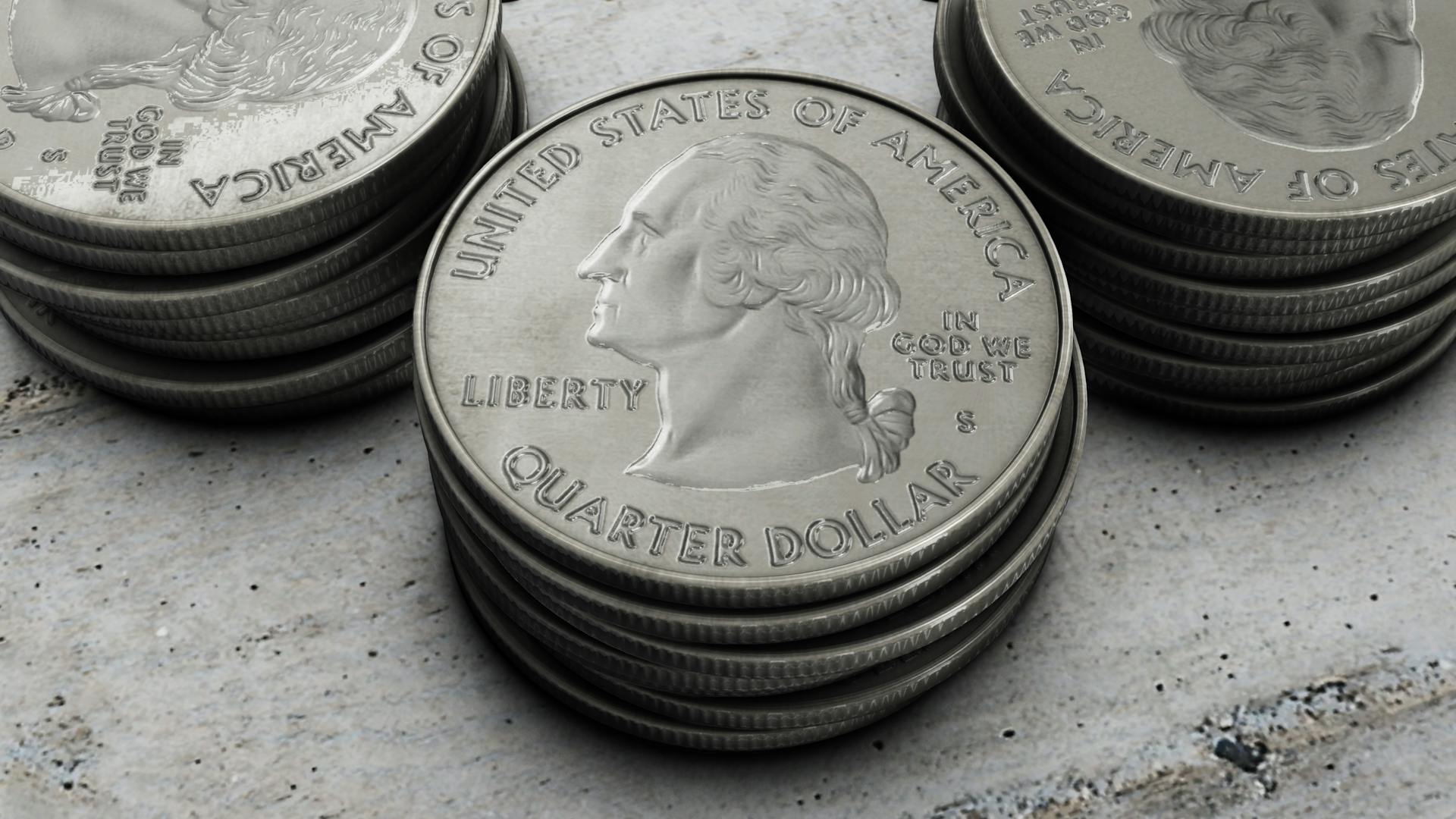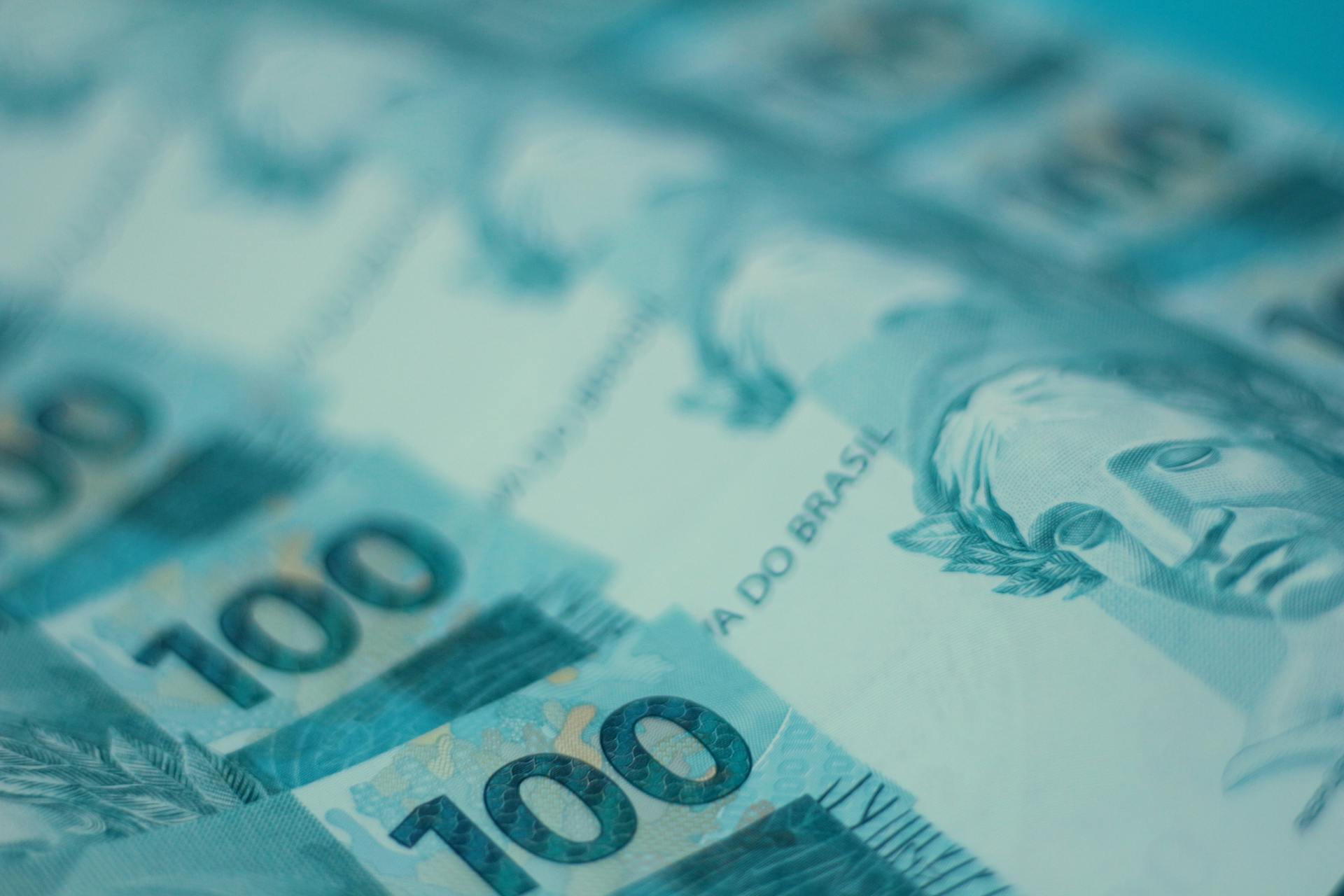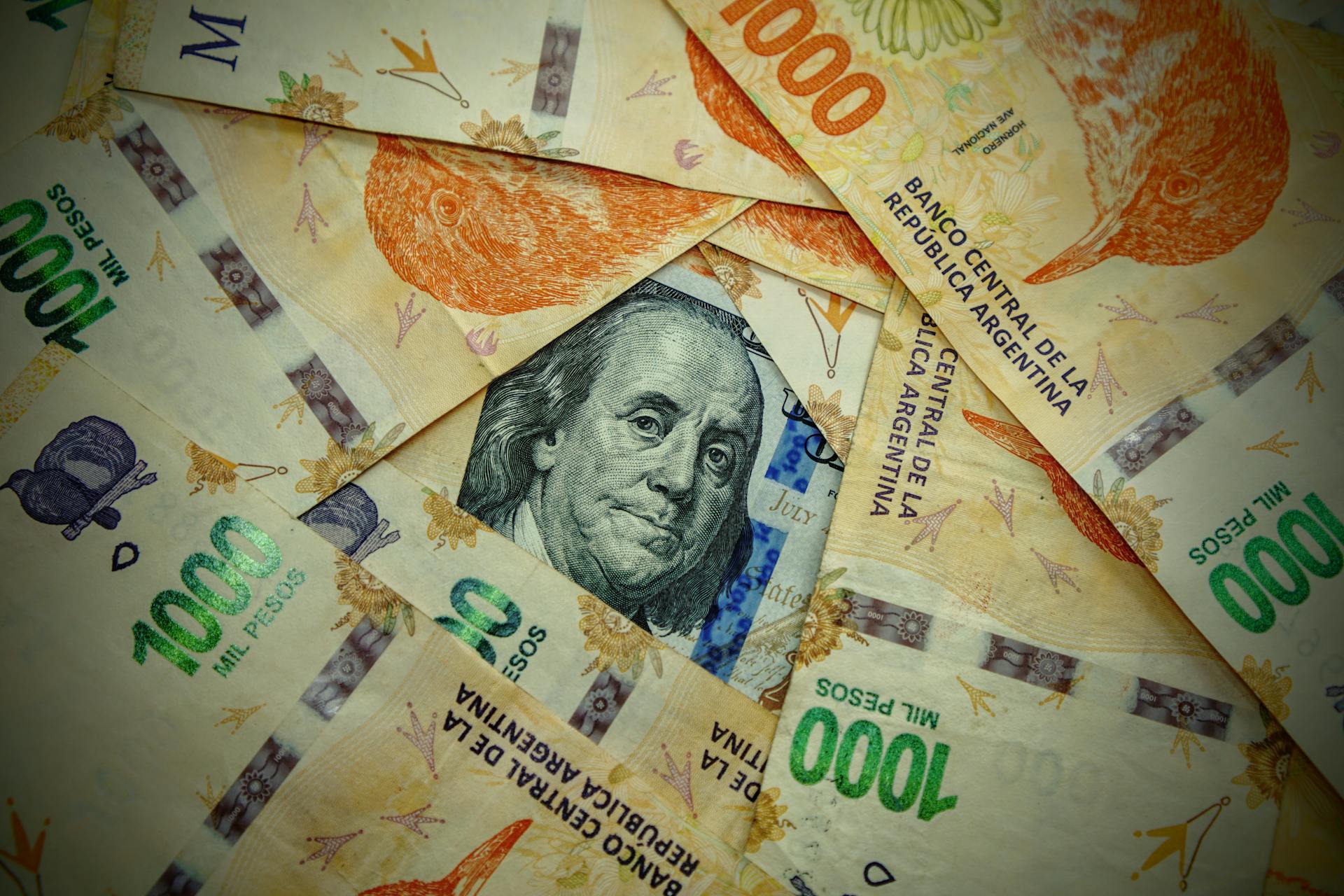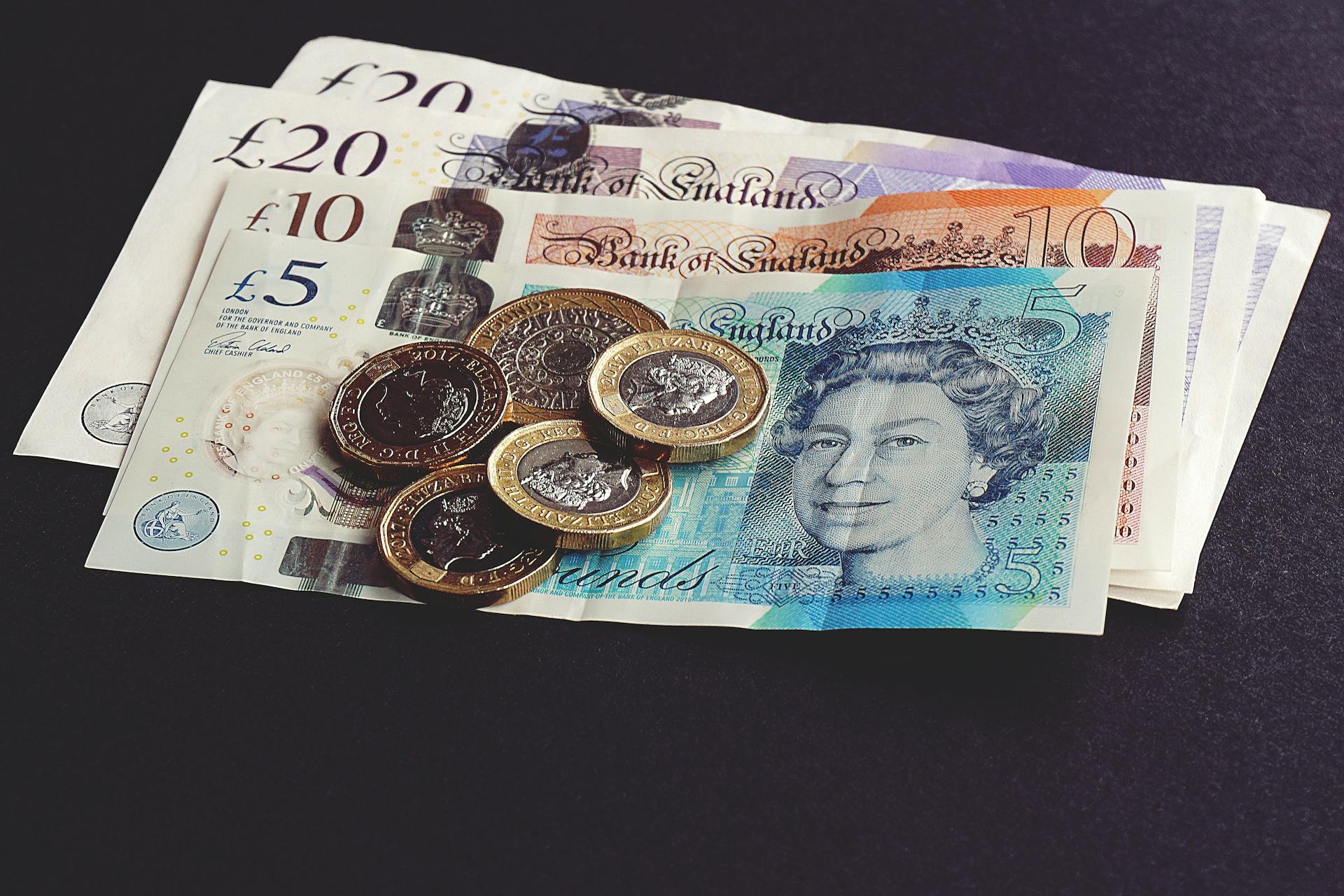
The 1967 sterling devaluation was a pivotal moment in the UK economy, marking a significant shift in the country's financial landscape. The devaluation of the pound from $2.80 to $2.40 against the US dollar had a profound impact on the UK's trade deficit and inflation rates.
The UK's trade deficit had been a growing concern, with imports exceeding exports by £1.5 billion in 1966. The devaluation helped to reduce this deficit by making British exports cheaper and more competitive on the global market.
The devaluation also led to a surge in inflation, with prices rising by 3.5% in the following year. This increase in inflation was largely driven by the higher import costs resulting from the devaluation.
The UK government's decision to devalue the pound was a response to the country's economic woes, including a large trade deficit and high inflation rates.
Additional reading: British Pound vs Sterling
Historical Context
The UK's economy was in a precarious state when Harold Wilson's Labour government took power in 1964. They inherited a massive external balance of trade deficit of £800 million.
The government faced immense pressure to devalue the pound, as the market feared Labour would implement a looser monetary policy to favor growth. This fear was partly due to the preceding Conservative government's expansive fiscal policy leading up to the 1964 election.
Wilson resisted devaluation, reportedly out of concern that Labour would be seen as the "party of devaluation." He also believed that devaluation would disproportionately harm low-income Britons with savings and poorer Commonwealth of Nations countries in the sterling area.
The government instead opted to impose a temporary surcharge on imports and a series of deflationary measures to reduce demand and imports. This approach was designed to address the inherited balance of payments problem without resorting to devaluation.
International aid played a crucial role in maintaining the value of sterling between 1964 and 1967. Lines of credit from central banks and the IMF, as well as a swap network with the Federal Reserve Bank of New York, enabled the Bank of England to intervene in the foreign exchange market.
These measures helped to maintain the pound's value at $2.80, but ultimately delayed the inevitable devaluation. The lack of fundamental economic improvements in the UK meant that the Bank of England's dollar reserves continued to dwindle.
Take a look at this: Sterling Bank (Nigeria)
Economic Background
The UK had a long-standing problem with a trade deficit, running a deficit on the current account balance of payments throughout the 1950s and 60s. This deficit was perceived as a major economic problem, requiring capital flows or the use of diminishing foreign exchange reserves to finance it.
The UK's productivity was relatively lower compared to European and US competitors, making UK goods less competitive and leading to a trade deficit. In a floating exchange rate, lower productivity tends to cause depreciation, but by keeping a fixed exchange rate, the government was battling against long-term trends.
The UK's decision to make sterling fully convertible in 1958 attracted significant sterling holdings by overseas governments, making the pound more subject to the moods of foreign investors. These large sterling reserves meant the pound was more vulnerable to external investors selling their holdings.
To maintain the exchange rate peg, the UK government borrowed from the IMF and Central Banks, which meant they needed to pursue an economic policy designed to pay back creditors. This led to the government running out of gold and foreign currency reserves.
In the mid-1960s, the government sought to promote the export sector and limit the growth of domestic demand to reduce the trade deficit and keep sterling strong. However, 1967 was a year of lower global economic growth, which hit exports and led to a rise in unemployment.
Discover more: Russian Foreign Currency Reserves
Something Done Out of Necessity
The 1967 sterling devaluation was a drastic measure taken out of necessity. The UK's balance of payments deficit had been a major concern, with a deficit of £800 million in 1966, and a further £1.1 billion in the first half of 1967.
The pound was overvalued, making British exports less competitive in the global market. This led to a decline in exports, which in turn worsened the balance of payments deficit.
The devaluation was announced by Chancellor of the Exchequer James Callaghan on November 18, 1967. It was a significant move, reducing the value of the pound from $2.40 to $2.40 for a pound, but only for a limited time.
The devaluation was a necessary step to make British exports more competitive, but it also had a significant impact on the cost of living for ordinary people.
On a similar theme: 1 Qatar Riyal
Consequences and Impact
The 1967 sterling devaluation had significant consequences and impact on the UK economy. The Labour Party struggled to cope with the reduction of sterling's international role, making the 1967 devaluation a turning point in their economic management.
The IMF offered a £1.4 billion loan to the UK in November 1967, but the devaluation failed to improve the country's economic position. It didn't even boost the Bank of England's reserve position, which was a major concern at the time.
Despite the devaluation, the internal value of money in the UK remained unaffected, as explained by a government official. This means that the pound in your pocket or purse didn't lose its value, but the price of imported goods was likely to rise.
On a similar theme: Egypt Pound Devaluation
Consequences
The 1967 devaluation of the British pound was a significant event with far-reaching consequences. The Labour Party's inability to effectively cope with sterling's reduced international role made the devaluation emblematic of their struggles.
The International Monetary Fund (IMF) stepped in to offer a £1.4 billion loan to the UK on November 29, 1967. This loan was a clear indication of the severity of the economic situation.
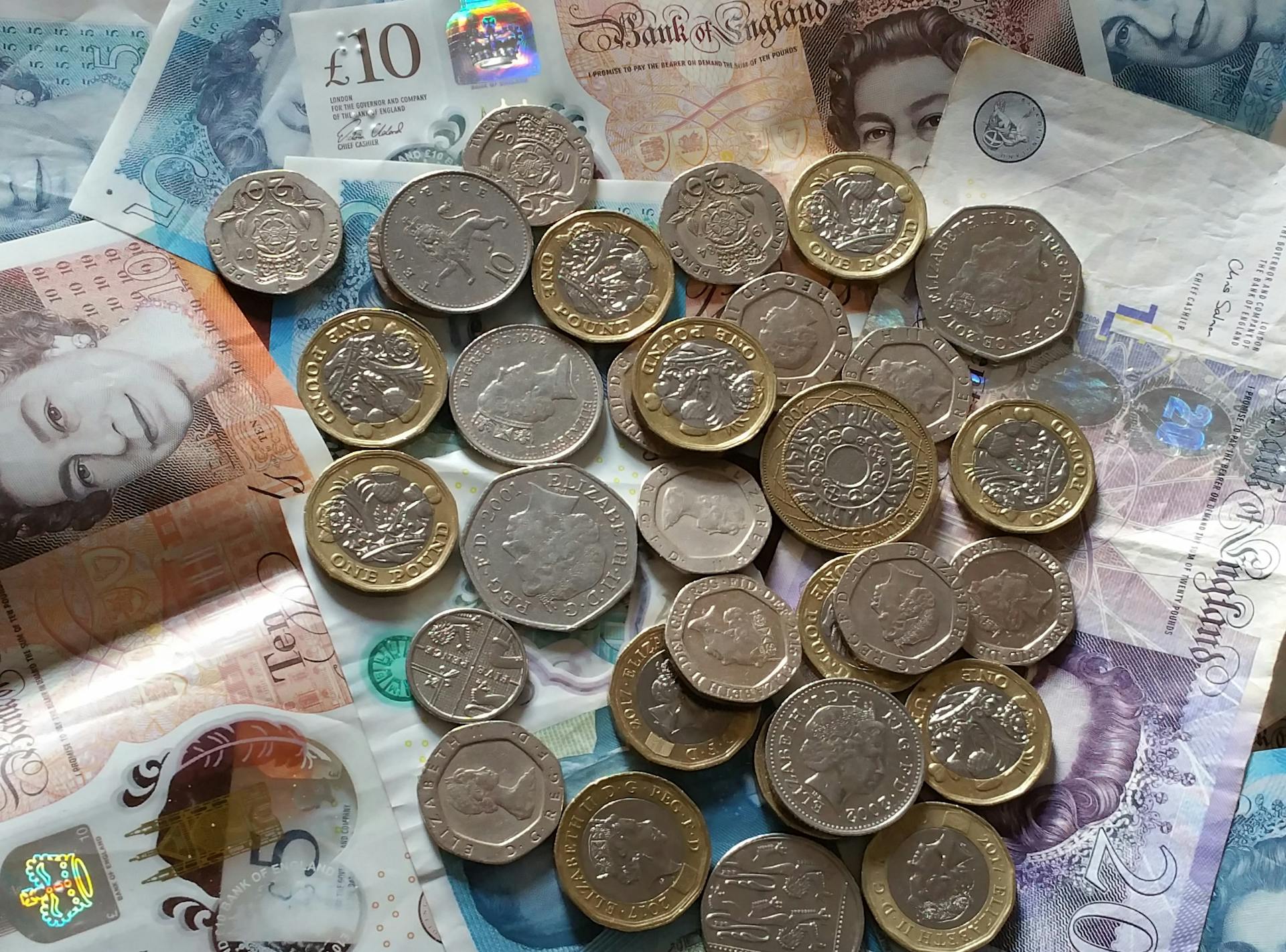
The 1967 devaluation failed to improve the UK's economic position, unlike the 1949 devaluation which had a positive impact. The Bank of England's reserve position didn't benefit from the devaluation either.
To appear stronger on the markets, the Bank of England started manipulating its reserve figures, a practice known as "window dressing".
Consider reading: Foreign Currency Reserve of Pakistan
Impact of
Devaluation of a currency doesn't directly affect the value of money in your pocket or purse. However, it can lead to higher prices for imported goods.
The impact of devaluation is most noticeable when you buy things from abroad. The current account, which tracks the trade balance, improved until the early 1970s.
Imported goods are likely to become more expensive due to devaluation. This is a consequence of the reduced value of your currency.
Economic Situation
The economic situation in 1967 was a perfect storm of challenges. The UK was running a trade deficit, with a relatively lower productivity compared to European and US competitors, making UK goods less competitive.
This led to a trade deficit, which required capital flows or the use of diminishing foreign exchange reserves. The government had to borrow from the IMF and Central Banks to keep the value of the Pound high, but this meant they needed to pursue an economic policy designed to pay back creditors.
The government's efforts to maintain the exchange rate peg were further complicated by the need to balance other objectives, such as promoting the export sector and limiting the growth of domestic demand. However, these efforts ultimately failed, and the government was forced to devalue the Pound in November 1967.
Here's a breakdown of the key economic indicators in 1967:
- Trade deficit: The UK trade deficit was a major economic problem, requiring capital flows or the use of diminishing foreign exchange reserves.
- Unemployment: Unemployment rose from 280,000 (1.3%) to 540,000 (2.3%) in mid-1967.
- Interest rates: The government cut interest rates from 6.5% to 5% in an attempt to selectively reflate the economy.
U.K. Economic Improvement Evaluation
The UK economy experienced a significant recovery by the end of the 1960s, but it wasn't enough to secure a win for the Labour government in the 1970 election.
The trade deficit, a major economic problem in the 1950s and 60s, was still present but had improved slightly. The deficit was financed through capital flows or the use of diminishing foreign exchange reserves.
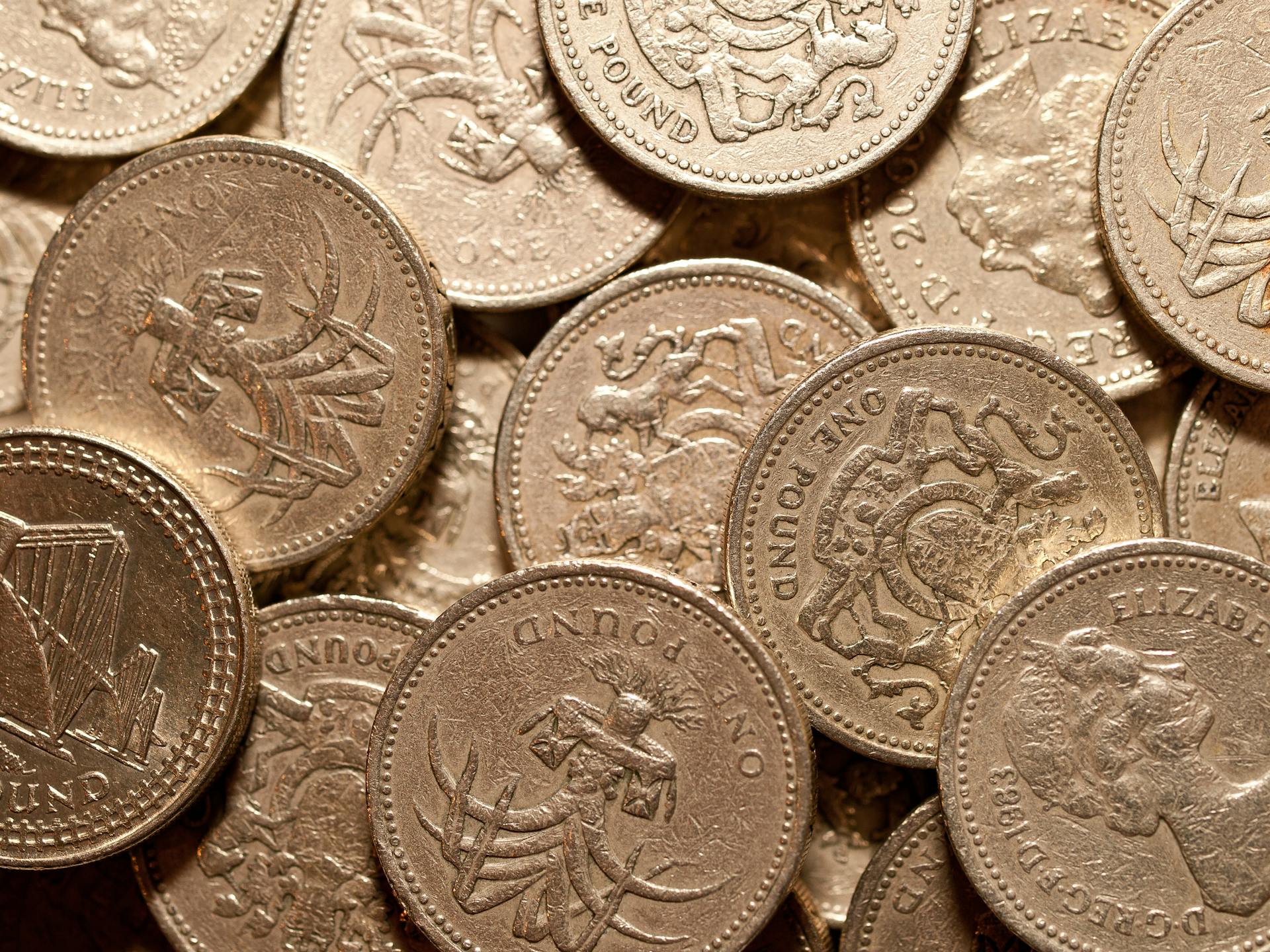
Lower productivity in the UK compared to European and US competitors made UK goods less competitive, leading to a trade deficit. This relative decline in productivity was a major issue.
The UK's fixed exchange rate policy made it difficult to address the long-term trends of lower productivity and trade deficits. The government had to borrow from the IMF and Central Banks to maintain the value of the Pound.
The government's efforts to promote the export sector and limit domestic demand had mixed results. A dock strike in 1967 hit exports, while a slowdown in global growth and higher import spending worsened the trade balance.
Unemployment rose from 1.3% to 2.3% in mid-1967, prompting the government to cut interest rates and relax hire-purchase restrictions. However, this led to higher import spending and a further deterioration in the trade balance.
The economy eventually recovered, but the Labour government lost the 1970 election. Despite the challenges, the UK economy showed signs of improvement by the end of the 1960s.
Here's an interesting read: 1967 Us Quarter Worth
U.K. Economy Fails
The UK economy struggled in the 1960s, with a trade deficit that was a significant problem. The country was running a deficit on the current account balance of payments throughout the decade, with a relatively lower UK productivity compared to European and US competitors.
This led to a trade deficit, as UK goods were less competitive in the global market. The government tried to maintain a fixed exchange rate, but it was a difficult task, especially with the large Sterling reserves held by overseas governments. The Pound was more subject to the moods of foreign investors, who were quick to sell their Sterling holdings if they saw poor economic data.
In 1967, the government devalued the Pound, which was seen as inevitable by most commentators due to the long-term decline in competitiveness. However, the devaluation didn't lead to an economic miracle, and growth remained below that of competitors. Inflation rose, and the underlying issues in the UK economy were not solved.
The government's attempts to maintain the exchange rate peg led to a conflict with other objectives, such as promoting the export sector and limiting domestic demand. The poor economic data, including a higher trade deficit and rising unemployment, made it difficult for the government to protect the value of the Pound.
Here are some key statistics that highlight the challenges faced by the UK economy in the 1960s:
- Trade deficit: A significant problem throughout the decade
- Relatively lower UK productivity: Compared to European and US competitors
- Large Sterling reserves: Held by overseas governments, making the Pound more subject to their moods
- Unemployment: Rose from 280,000 (1.3%) to 540,000 (2.3%) in mid-1967
- GDP growth: Remained below that of competitors after the devaluation
The government's efforts to address the economic challenges were hindered by the need to borrow from the IMF and Central Banks to keep the value of the Pound high. This led to a prolonged period of deflationary pressures, which made it difficult for the economy to recover.
Frequently Asked Questions
Did devaluing the pound work?
Devaluing the pound had a mixed record, with a 1949 devaluation helping the British economy but a 1967 devaluation failing to improve the UK's economic position. The outcome was also disappointing for the Bank of England's reserve position.
Sources
- https://history.blog.gov.uk/2017/11/17/whats-the-context-18-november-1967-devaluation-of-sterling/
- https://en.wikipedia.org/wiki/1967_sterling_devaluation
- https://www.elibrary.imf.org/view/book/9781451971477/ch021.xml
- https://issuu.com/fcohistorians/docs/what_s_the_context_blog_collection/s/11682658
- https://www.economicshelp.org/blog/18582/unemployment/uk-devaluation-of-sterling-1967/
Featured Images: pexels.com
